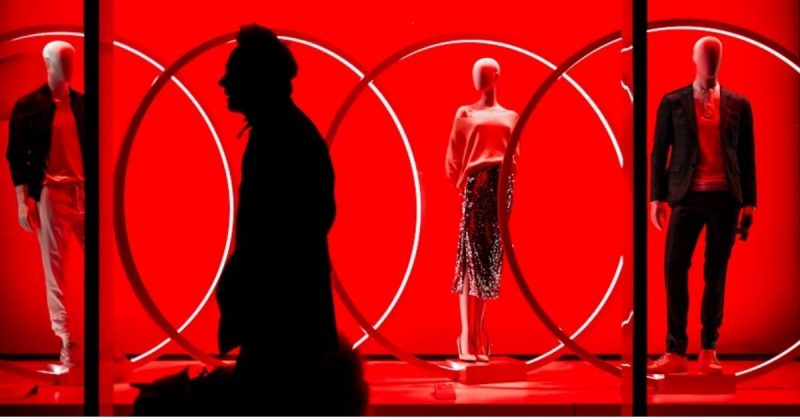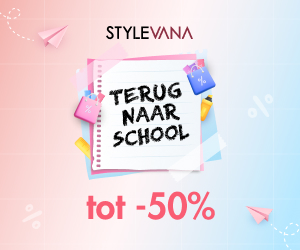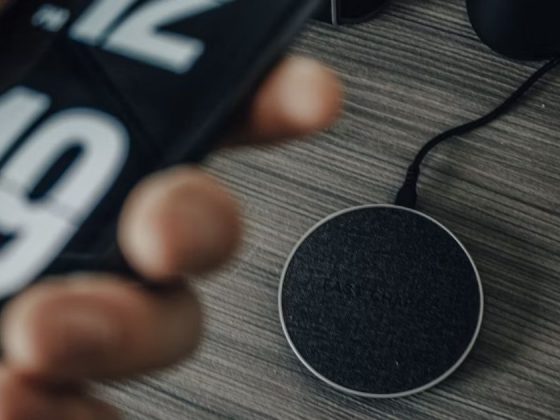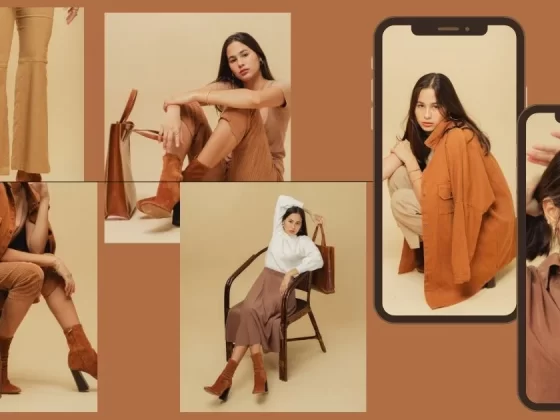In the age of influencer marketing and algorithm-driven shopping, it’s easier than ever to fall for fashion hype. One minute it’s a “must-have,” and the next it’s collecting dust in the back of the closet—or worse, falling apart after one wash. While some brands earn their cult status through real craftsmanship and consistent quality, others ride the wave of aesthetics, buzzwords, and buzzy endorsements without delivering on value. So how can shoppers spot the difference between truly elevated fashion and overpriced fluff
? Here are the red flags that scream “overhyped”—and why it’s smart to pause before pulling out the credit card.
10 Fashion Red Flags to Spot Before You Spend
1. All Hype, No Heritage
When a fashion brand seems to skyrocket from obscurity to ubiquity overnight—suddenly splashed across every TikTok “haul” or Instagram feed—it often signals marketing momentum rather than meaningful design roots. While the buzz might be impressive, real staying power in fashion usually stems from a deeper foundation: a story, a purpose, or a commitment to quality. Established labels, whether century-old maisons or modern indie standouts, typically have a design philosophy, artisanal techniques, or cultural influence woven into their identity.
Brands that thrive solely on viral drops, celebrity shout-outs, and aesthetic trends may be built on sand. Without heritage, craftsmanship, or clear creative direction, they’re often chasing the algorithm rather than creating garments with longevity. If the branding feels louder than the product itself—or if the “hype” disappears as fast as it arrived—it’s likely more of a moment than a movement.
2. Questionable Quality at Premium Prices
A steep price tag doesn’t automatically signal high quality. In fact, one of the biggest fashion red flags is a basic piece marked up wildly due to a trending logo or influencer endorsement. A $150 hoodie made entirely of thin polyester or a handbag that squeaks like plastic might look chic on the surface—but the materials and construction don’t lie. Quality garments are built to last: fabrics should feel substantial, seams should be cleanly finished, and details—like zippers, buttons, and lining—should reflect care, not shortcuts.
If an item feels flimsy fresh out of the packaging, it’s not likely to survive wear and washing. Fashion that earns its price does more than look good in photos—it moves well, holds up over time, and improves with wear. Without that, the purchase becomes less of an investment and more of a momentary thrill with a short shelf life. Shoppers looking for value should always check the tags, inspect the details, and ask: “Is this worth it beyond the name?” Often, the answer reveals itself in the stitching.
3. Aggressive Branding Over Design
There’s a difference between branding and over-branding—and when a label relies more on oversized logos than on actual design innovation, it’s often a red flag. Loud fonts, all-over monograms, and in-your-face branding can mask lackluster tailoring, uninspired silhouettes, or subpar fabrics. In many cases, the logo becomes the selling point, rather than the craftsmanship or creativity behind the garment. It turns fashion into a billboard, prioritizing branding over creativity or wearability.
This trend stands in stark contrast to what’s now called “quiet luxury”—brands that speak softly through impeccable cuts, high-quality textiles, and thoughtful design. These pieces don’t need to shout their name to feel valuable; they let structure, fit, and material do the talking. When branding becomes the loudest thing in the room, it’s often a sign that the clothes themselves have little else to say.
4. Poor Reviews Hidden Behind Glossy Ads
A well-produced campaign with slick visuals and influencer endorsements might look convincing—but it’s no substitute for product quality. Some brands spend more on marketing than manufacturing, pouring resources into creating hype rather than refining fit, durability, or design integrity. The result is often a disconnect between how the product looks online and how it performs in real life.
That’s why digging deeper into customer feedback is crucial. Online: Scour reviews—especially those outside the brand’s official site—offer the real story. Platforms like Reddit, Trustpilot, or dedicated fashion forums often reveal consistent patterns: inconsistent sizing, disappointing fabric, poor stitching, or unresponsive customer service. If a brand is all glitz but no reliability, the red flags won’t show up in the ad—it’ll be in the comments section.
5. Constant “Limited Drops” That Pressure Buying
The hype-driven fashion model thrives on urgency. Brands that rely on back-to-back “limited drops,” countdown timers, or claims like “only 200 in existence” often manufacture scarcity to push quick sales. While true exclusivity can add value—especially with artisanal or bespoke pieces—many overhyped labels use it as a marketing gimmick rather than a reflection of craftsmanship or rarity. This manufactured urgency fuels snap decisions, allowing FOMO to overpower intentional, mindful shopping.
Even more telling is when every drop starts to blur together—identical silhouettes, recycled designs, and nothing new beyond a catchy name. It’s a clear sign the brand is prioritizing quick profit over genuine creative evolution. Without real innovation or improved quality between releases, the brand becomes a cycle of hype and disappointment. Limited edition should mean something rare and carefully considered, not mass-produced under a thin veil of exclusivity.
6. Inconsistent Sizing and Fit
Fit goes beyond aesthetics—it’s the backbone of well-made clothing. Without proper tailoring and proportion, even the most luxurious fabric or trendy design falls flat. When a brand consistently gets it wrong, it reflects rushed production and poor quality control. Inconsistent sizing—where a medium fits like a small one week and a large the next—shows a lack of standardized pattern-making and attention to proportion. It’s especially common in brands that prioritize volume and trend speed over thoughtful construction.
Quality fashion, even at entry-level luxury or contemporary price points, takes the time to refine its fit across body types. Poor tailoring, uneven seams, and awkward silhouettes are signs that the brand isn’t investing in real design, just churning out garments to ride the wave of a trend. When reviews pile up citing confusing or frustrating sizing experiences, it’s a clear indicator that a brand cares more about what’s sold than what’s worn.
7. Overpriced Basics Without a Twist
Basics are the foundation of any wardrobe, but when a brand starts charging luxury prices for plain tees, hoodies, or tanks without offering premium quality, it’s a major red flag. A white T-shirt can absolutely justify a higher price point—if it’s made from ultra-soft pima or Supima cotton, has tailored seams, or features subtle construction upgrades that elevate it from everyday to exceptional. However, when the only “premium” element is a logo tag or a trendy influencer wearing it, that price hike loses its merit.
Some overhyped labels bank on branding alone to justify inflated costs, offering basics that are indistinguishable from fast-fashion alternatives in cut, fabric, or durability. True value lies in thoughtful details—like reinforced hems, flattering drapes, or eco-conscious production—not in the name printed across the chest. Without innovation or craftsmanship, it’s not elevated fashion—it’s just expensive mediocrity.
8. Everything Is “One Size Fits All”
The phrase “one size fits all” might sound inclusive, but in reality, it’s anything but. Most bodies are wonderfully unique in shape, size, and proportion—and trying to cram them all into a single standard piece rarely ends well. While this approach might simplify manufacturing and inventory for brands, it sacrifices wearability and comfort for the majority of shoppers. Loose, oversized silhouettes meant to “fit everyone” often end up flattering no one.
More often than not, one-size garments are mass-produced with little regard for tailoring or body diversity. This can result in awkward cuts, gaping seams, or an unbalanced fit that leaves wearers feeling more frustrated than fashionable. Truly inclusive fashion doesn’t erase size—it embraces it with well-thought-out ranges, adaptive fits, and intentional design. When brands rely on a “one size” model, it’s less about versatility and more about cutting corners.
9. Flashy Collaborations Over Core Consistency
Celebrity collaborations and influencer-designed capsules can be exciting—they generate buzz, drive sales, and create a sense of exclusivity. But when a brand relies too heavily on these high-profile pairings while its core collections remain uninspired or neglected, it reveals a deeper issue. Trend-chasing becomes the brand’s main identity, rather than thoughtful design or brand evolution. Limited drops tied to famous faces may draw attention, but they don’t build long-term loyalty if the main offerings can’t stand on their own.
Strong, credible labels know that collaborations should enhance—not distract from—their aesthetic. When core lines feel like filler between collabs, or when quality and creativity are only present in celebrity-linked items, it’s a sign that the brand is more invested in momentary relevance than timeless appeal. A brand with substance should be just as compelling without the star power.
10. Sustainability Claims Without Proof
With consumers growing more conscious of their fashion footprint, sustainability has become a powerful selling point. Unfortunately, not all eco-claims are created equal. Brands that throw around terms like “green,” “ethical,” or “carbon-neutral” without clear data or third-party verification often engage in greenwashing—marketing tactics meant to appear responsible without true accountability. These vague statements can be used to mask fast-fashion practices or poor supply chain transparency.
A genuinely sustainable brand will openly share its processes—what materials are used (and where they’re sourced), how garments are made, who makes them, and what certifications or audits support their claims. If a company’s sustainability section is all buzzwords and no receipts, or if environmental language is plastered all over ads but missing from the fine print, it’s likely prioritizing optics over impact. In an industry where accountability is critical, proof isn’t optional—it’s the bare minimum.
Trends Fade, Style Endures
Trendy branding, celebrity shout-outs, and sleek packaging might look great on the feed—but they don’t always translate to wardrobe staples worth the spend. True style lies in pieces that last, feel good, and reflect intentional design over internet buzz. Overhyped fashion fades fast, but smart style choices have staying power.







